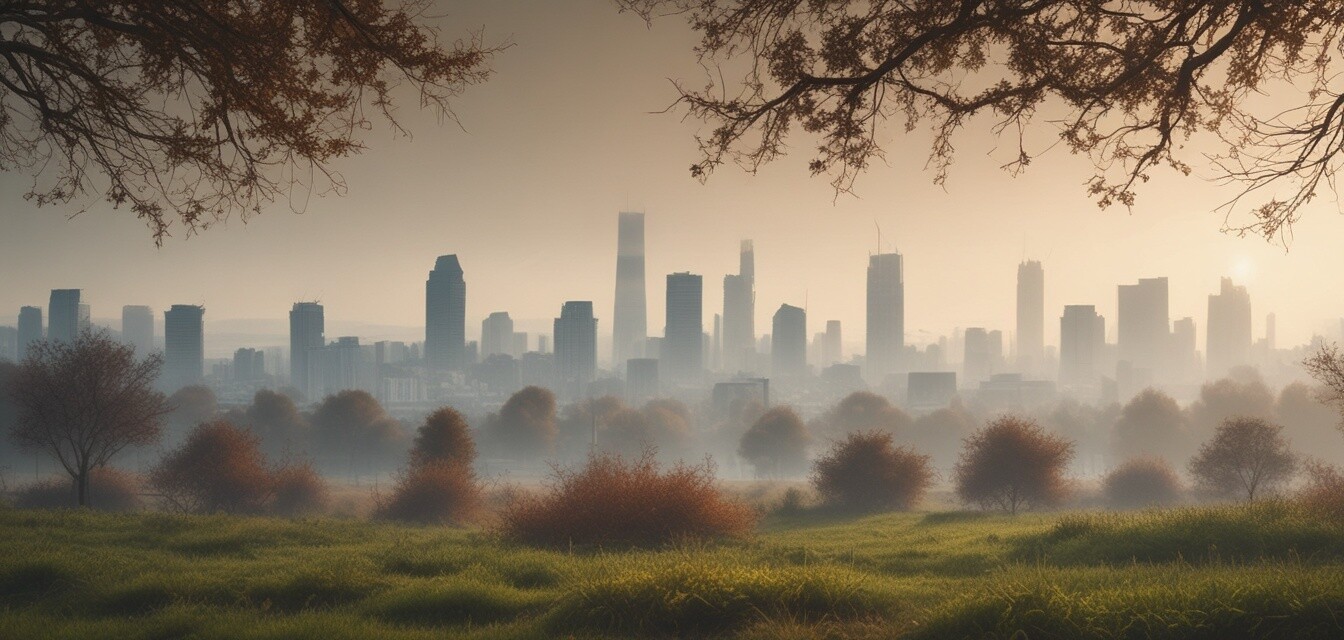
The Impact of Pollution on Allergies
Key Takeaways
- Research links increasing air pollution with heightened allergy symptoms.
- Urban areas are particularly affected due to higher pollution levels.
- Allergy sufferers can take proactive measures to manage symptoms amid pollution.
- Understanding pollution trends can help in planning outdoor activities.
- Awareness of allergy-proof products is essential for relief.
Air pollution has become a growing concern in recent years, particularly for those who suffer from allergies. As urban areas expand and industrial activities increase, the air quality continues to deteriorate, leading to potential exacerbations of allergy symptoms. In this article, we will explore the research linking air pollution to increased allergy severity and discuss what this means for allergy sufferers living in urban environments.
Understanding Pollution and Allergies
Pollution refers to harmful substances present in our environment, and it comes in various forms, including:
- Particulate matter (PM)
- Nitrogen dioxide (NO2)
- Sulfur dioxide (SO2)
- Ozone (O3)
- Volatile organic compounds (VOCs)
These pollutants can enter the respiratory system, triggering inflammation and other responses, particularly in individuals already sensitive to allergens such as pollen, mold, and dust mites. It is essential to understand how these contaminants impact health and allergy conditions.
| Pollutant | Source | Effect on Allergies |
|---|---|---|
| Particulate Matter | Vehicle emissions, industrial processes | Can worsen respiratory conditions, leading to more severe allergy symptoms |
| Nitrogen Dioxide | Burning fossil fuels | Increases susceptibility to allergens |
| Sulfur Dioxide | Power plants, industrial activities | Can aggravate existing allergy symptoms |
| Ozone | Photochemical reactions in the atmosphere | Makes allergic reactions more intense |
| Volatile Organic Compounds | Cleaning products, paints, and some building materials | Can trigger allergy symptoms in sensitive individuals |
The Research Behind Pollution and Allergy Severity
Recent studies have shown a clear connection between air pollution levels and worsening allergy symptoms. A prominent research paper indicated that individuals exposed to higher levels of allergens in polluted air reported more severe reactions. For instance, pollen is known to be a significant allergen, and studies suggest that air pollution may increase the amount of pollen produced by plants.
According to specific studies, allergy sufferers in cities with high pollution rates experience:
- Increased frequency of allergic rhinitis (hay fever)
- More intense asthma symptoms in conjunction with allergies
- Longer duration of allergy seasons due to climate changes
Urban Areas and Allergies
Urban areas present unique challenges for allergy sufferers due to their concentration of pollutants. According to the latest news and trends, the following factors contribute to increased allergy severity in cities:
| Factor | Impact on Allergies |
|---|---|
| High Population Density | Increased emissions and higher levels of allergens |
| Urban Heat Islands | Extend pollen season and promote growth of allergenic plants |
| Limited Green Space | Reduces natural air purification and increases exposure to allergens |
| Industrial Activities | Enhance air pollution and exacerbate allergy symptoms |
Management Strategies for Allergy Sufferers
For individuals living in urban settings, it’s essential to adopt strategies to manage allergic reactions, especially during high pollution days. Here are some practical tips:
Tips for managing allergies amid pollution
- Stay indoors on days with poor air quality or during high pollen counts.
- Use air purifiers within your home to minimize indoor allergens.
- Wear masks outdoors to limit inhalation of pollutants and allergens.
- Wash clothing and bed linens frequently to reduce allergen buildup.
- Consult with healthcare professionals about suitable allergy medications and treatments.
- Consider allergy-proof bedding to create a better sleeping environment.
- Follow local news and alerts for pollen and air quality levels.
The Future of Allergy Treatments
As we continue to navigate the effects of pollution on allergies, advancements in technology and increased awareness of environmental issues may lead to improved treatments and preventive measures. The integration of lifestyle modifications aimed at minimizing exposure to allergens can play a significant role in managing allergy symptoms.
Moreover, the rise of environmentally friendly products, such as allergy-proof bedding and air purifiers, are promising solutions for allergy sufferers looking to reduce their symptoms amidst a polluted backdrop.
Conclusion
The link between pollution and allergies is becoming increasingly significant as urban living contributes to worsening air quality. With understanding and proactive management, allergy sufferers can navigate these challenges effectively. Staying informed and knowing how to respond to the changing environment will empower individuals to maintain better health during allergy seasons.
Pros
- Greater awareness leads to better coping strategies.
- Innovative products are continuously emerging.
- Increased community focus on air quality improvements.
Cons
- Pollution is often unavoidable in urban areas.
- Allergy symptoms may become more severe and complex.
- Costs of certain allergy management products can be high.